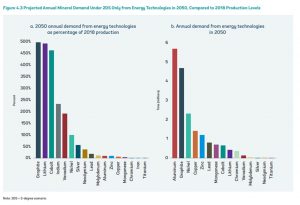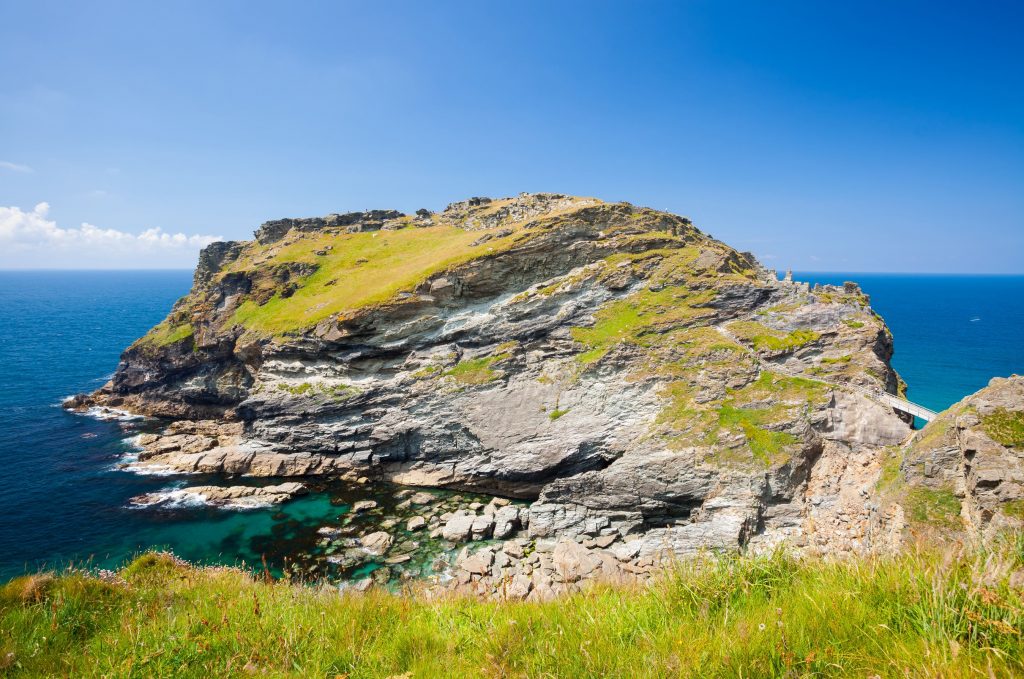Cornish Lithium
Marketing


Lithium is now one of the most important metals in the world due to the growing demand for electric vehicles powered by lithium-ion batteries and for the storage of power produced from renewable sources. But it is not the only metal vital to future green economies.
A 2020 report by the World Bank has projected the future use of lithium, alongside other important ‘battery minerals’, namely graphite, and cobalt. It is predicted that we may need as much as five times the current production levels of these minerals by 2050:

Source: “Minerals for Climate Action: The Mineral Intensity of the Clean Energy Transition” – Climate-Smart Mining Facility, The World Bank, 2020
This immediately presents a challenge for the planet on a truly global scale. Clearly the need exists, and strong business cases are built around the growing extraction of these vital minerals. However, the sheer scale of the mining effort that will be required to produce the quantities needed, could potentially lead to environmental catastrophe. This is where a strong case must be made for the clean growth of the extractive industries and a move towards responsible mineral extraction for the sake of the planet and future generations.
To deliver growth in extractive industries in a clean and sustainable way, the sector must embrace new technologies and new ways of working. There are many proposed solutions to support green growth within mineral exploration and to improve the efficiency and cleanliness of extraction, and many new ideas are also using satellite technology to deliver efficiencies.
On the ground, examples include a circular economy approach to exploration where companies are looking into the recovery of critical and other raw materials from mining waste (also known as the Re-Mining of Mining Waste). These techniques are increasingly cost effective and reduce the overall burden on finding new sites for extraction, or the vast expansion of existing sites.
Satellite data shows huge potential in combination with other data for identifying potential mineral deposits from space. Using a combination of datasets from multiple satellites, airborne surveys, and historical maps and by looking at the geology of the areas in question, it is possible to create prospectivity maps These maps highlight areas where there is a significantly increased likelihood of finding particular mineral deposits (for example lithium brines), which can subsequently be extracted by responsible mining.
Furthermore, satellites can provide solutions to the challenges of understanding and monitoring the environmental and societal changes caused by mining, whilst also being effective tools to support the transport and logistics surrounding mining sites and day-to-day mining operations. This industry sector is significant, with environmental monitoring and compliance being about 5% of total costs of mining operations. With the top 40 mining companies spending US$448bn on operations in 2015, this means a spend of US$22bn on environmental monitoring and compliance.
Satellites also have a role to play in community engagement, as monitoring from space is regular, and can easily be shared publicly to make visible to a local and international audience the environmental impact and safety of mining facilities. Such information is also of great interest to investors and the finance community.

In a recent project with Cornish Lithium, the Satellite Applications Catapult used remote sensing techniques to help identify potential sites for lithium extraction in Cornwall, from space.
The project identified several areas of interest for further exploration work in Cornwall, and subsequent ground proofing activities have confirmed the presence of lithium-enriched geothermal waters in the areas identified by the study.
The project had two distinct outcomes. It progressed the exploration activities needed to move towards indigenous UK lithium extraction and it demonstrated the value of a satellite-based data tool for identifying potential mineral deposits from space, opening opportunities for satellite applications related to mineral exploration, environmental monitoring, transport and logistics, and day-to-day operations.
Both the exploitation of indigenous lithium and the utilisation of satellite-based data in the mining industry have far-reaching positive impacts for the UK economy. Work carried out within this project has applicability to a wide set of stakeholders. A powerful application of this tool would be the environmental monitoring of mines throughout their life-cycle. This has huge potential value as an export capability for the UK businesses involved in the project, and work is now underway to understand the potential for this.
However, lithium is only one potential target and the methods developed in this project are applicable to the exploration for a wide range of minerals and therefore have potential export opportunities around the world.
Jeremy Wrathall, Founder & CEO, Cornish Lithium Ltd, said:
“We believe that techniques developed from this study will prove of great interest to the mining industry globally given the growing importance of Earth Observation techniques as an unobtrusive exploration tool worldwide. We look forward to taking this exciting project forward to the next stage of its development.”
Find out more about Cornish Lithium by visiting our new PROJECTS HUB
As evidenced by the above examples, technological developments in mining are opening up new mineral deposit types and are providing the potential for significant national and international benefits. They provide a method to address cost reduction and increasing competitiveness in mining by ultimately reducing the cost of prospecting. They can also help reduce outdated on-the-ground activities and accelerate exploration, in an industry that is embracing technology as part of a solution to reduce costs.
Importantly, methods such as those developed during exploration activities with Cornish Lithium provide useful learnings for the wider exploration of other minerals as well. Through a better understanding of the unique characteristics surrounding other mineral deposits, including the geology, topography and other key identifiers, it is possible to support the translation of this research for other targets. With the increasing availability of automation in this type of data analysis, this process can be accelerated and the future begins to look bright for a truly game-changing technological and ecological shift in the mining industry.